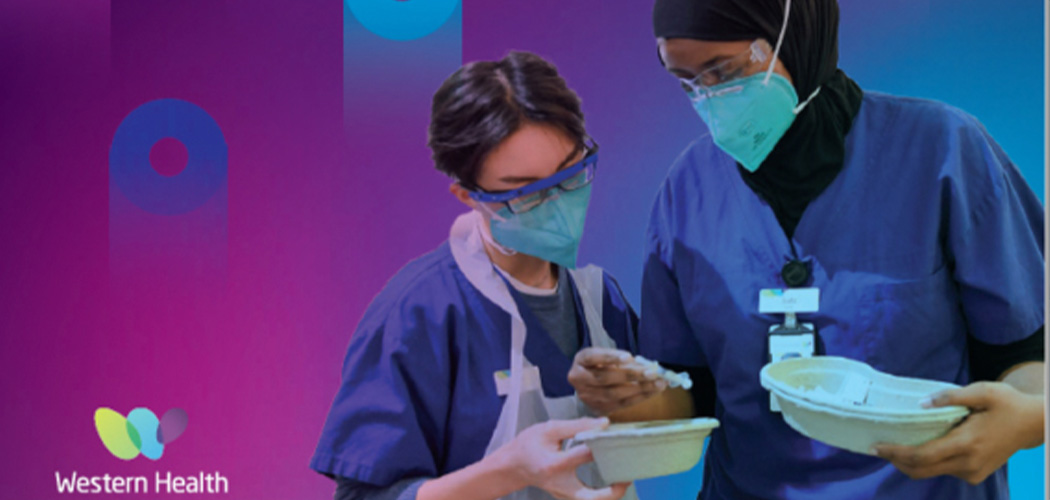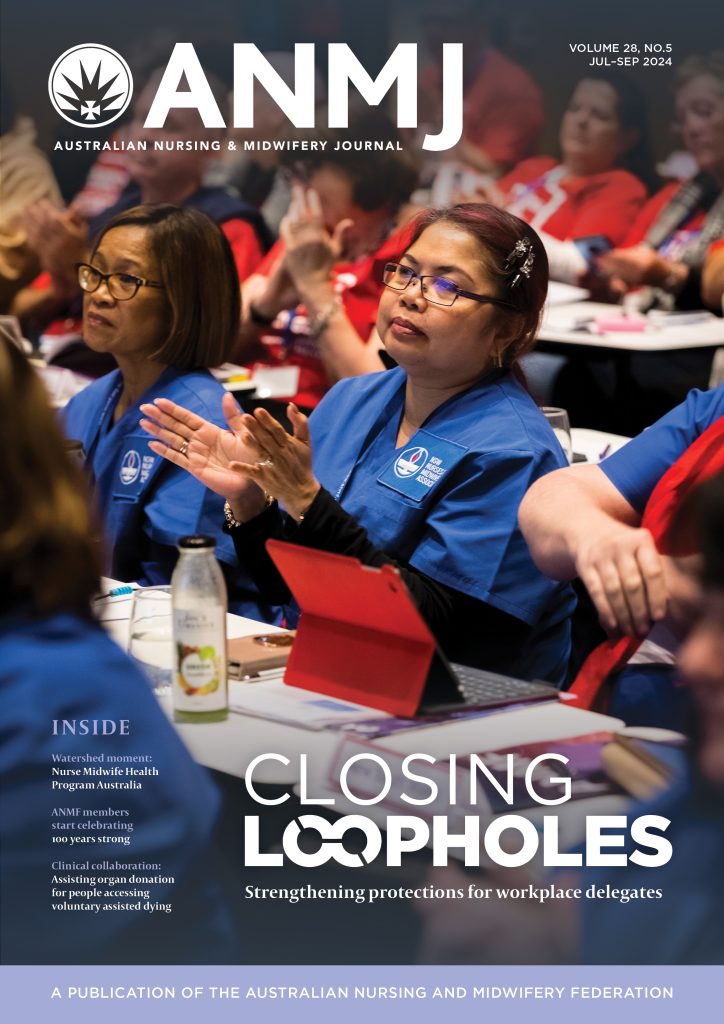Situated in a rapidly growing, diverse, and socioeconomically challenged corridor, Western Health (WH) services a community of over one million people.
Article summary:
Projections indicate a substantial proportion of Melbourne’s future population growth will occur in its outer west, directly impacting WH’s nursing and midwifery workforce supply and demand. To meet its workforce needs and deliver high quality care, WH developed an innovative Nursing and Midwifery Workforce Plan (NMWP). The purpose of the Plan was to attract and retain the best nurses and midwives, empower nurses and midwives to provide best care, and enhance clinical and professional leadership and management. The initiatives implemented as part of the NMWP resulted in an increased number of nurses and midwives employed, decreased workforce attrition and vacancies, and a sustained decrease in the use of agency staff. The NMWP provides WH with a framework to build the capacity and capability of its nursing and midwifery workforce with benefits for staff, patients, and the community.
Why have a nursing and midwifery workforce plan?
WH employs more than 12,000 staff including over 5,600 nurses and midwives to provide a range of hospital and community-based healthcare services to a rapidly growing, diverse region. Like other health services in Australia and globally, WH finds recruiting and retaining nurses and midwives challenging. With identified workforce shortages before the COVID-19 pandemic, the situation has escalated as more nurses and midwives are needed to meet increased service demands from population growth in WH’s catchment area. WH anticipates that it will need at a minimum, an additional 3,800 nurses and midwives by 2029. The NMWP was devised to provide a strategic framework for recruitment, retention, and future growth.
What is Western Health’s Nursing and Midwifery Workforce Plan?
The NMWP 1 is a component of WH’s overarching workforce strategy, with targeted strategic actions to ensure its nursing and midwifery workforce is well positioned to continue growing in capacity and capability. A variety of concurrent strategies were designed to facilitate recruitment and retention whilst also enabling WH to be dynamically responsive to the healthcare needs of the community it serves and to be an employer of choice.
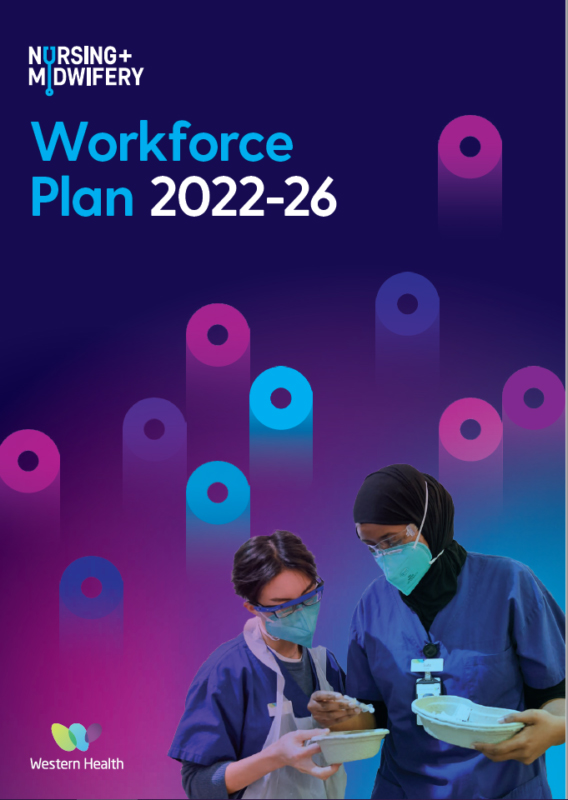
The Plan was co-designed in consultation with nurses, midwives, managers, operational directors, and executives. Together, three key objectives were identified for WH:
- To attract and retain the best nurses and midwives.
- To empower best care, by exploring alternate models of care and building expertise.
- To enhance clinical and professional leadership and management.
What’s happened to date?
The NMWP initiatives were focused on supporting and employing graduate nurses and midwives, those undertaking postgraduate studies, those with specialist postgraduate qualifications, qualified nurses and midwives without hospital experience, and undergraduate student nurses and midwives. The following innovations were planned and implemented.
West Metro Graduate Program
In collaboration with three other Victorian health services and supported by the Victorian Department of Health, WH led a graduate program providing a pathway for newly registered Division 1 and 2 nurses to gain experience working in an acute hospital setting and contribute to staffing COVID-19 vaccination programs. The Program provided nurses with guaranteed employment for 12 months working within vaccination hubs and a 16-week rotation in an acute ward at one of the partnering health services. Of the 184 nurses who commenced in July 2021, 92% (n = 170) completed this program. WH was able to retain 79% (n = 135) of these graduates, 13% (n = 22) were employed by one of the other partner health services, and 8% (n = 13) resigned.
Transition to Acute Care Program
Talent identification and acquisition is a key component of WH’s centralised nursing and midwifery recruitment process. In application assessments, the talent acquisition team identified that many applications were from qualified nurses who did not have acute hospital experience. This provided the impetus for the development of a Transition to Acute Care (TAC) Program that aimed to support qualified nurses to transition into the acute care setting with a view to permanent employment after the successful completion of a supported eight-week program.
Participants completed an initial two weeks of supported learning and supernumerary time, in a role exceeding usual staffing ratios until they were ready for a full patient load. Unit-based preceptors and WH educators supported learning and assessment hurdles for participant progress. On completion of the TAC Program and successful competency-based assessment, ongoing employment offers were made to participants. In October 2022, 47 participants started the TAC Program that subsequently evolved into the ‘refresher’ programs funded by the Department of Health in 2023. Ongoing positions at WH were taken up by 88% (n = 41) of participants from the initial program. Over 100 nurses participated in the 2023 TAC Program that has received positive feedback from participants and unit managers.
I’m so pleased that I’ve been able to land my dream job working in the ED and the TAC program was incredibly helpful in gaining the experience in an acute field that I wouldn’t have been able to achieve otherwise. (Catherine – TAC Program participant)
The participants from the Transition to Acute Care Program have been a refreshing addition to my department. Despite their limited experience in acute care, their mid-career background brings a wealth of life experiences that seamlessly integrate a lovely wholesomeness into our team dynamic. I am pleased to share that I have extended a permanent role post-program to one of the participants. They have proven to be an exceptionally loyal and enthusiastic staff member, such a good fit for our team. (Sarah – Nurse Unit Manager).
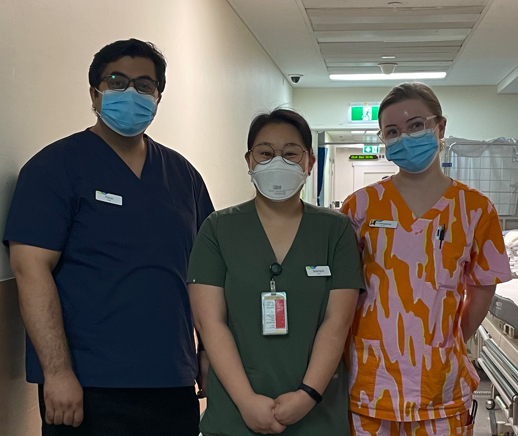
RUSON/M Program
Registered Undergraduate Students of Nursing/Midwifery (RUSON/Ms) are currently enrolled undergraduate nursing or midwifery students employed by a health service. In 2020 WH implemented a pilot RUSON and the first RUSOM program in Victoria with 64 participants. The program was expanded in 2022 with 259 RUSONs and 37 RUSOMs employed across most of WH’s wards and maternity areas. On program completion, many of the RUSON/Ms applied and joined WH’s nursing and midwifery graduate programs providing a streamlined transition from student to qualified practitioner. The RUSON/M workforce has bolstered supportive care for WH Nurses and Midwives (above legislated staffing levels) and facilitated a collaborative team approach to care delivery.
Working at Western Health as a RUSON is such an incredible and rewarding learning experience. This role not only gives me an opportunity to improve on the skills I have learnt during my studies and on placement, but it also allows me to learn new skills that are used as a nurse. (Alannah –2023 RUSON program participant)
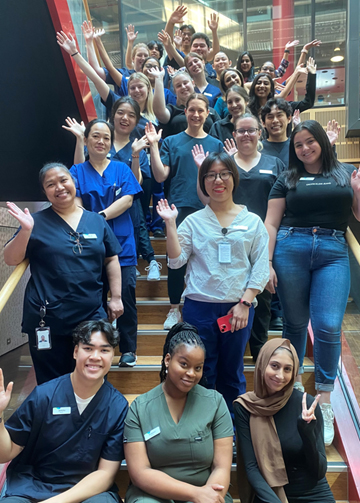
Pathways to Postgraduate Programs
As part of the Workforce Plan, two targeted programs were developed by WH’s Nursing and Midwifery Education team:
- Grad+: a two-year program that includes four rotations and two fee-free postgraduate subjects (in partnership with five universities) with a focus on Clinical Leadership and Clinical Assessment.
- The ‘introduction’ to specialties program offered nurses a 12-month program to support specialty introduction with a pathway to postgraduate studies.
WH’s investment in supporting the nursing and midwifery workforce to undertake postgraduate studies has resulted in 180 nurses/midwives undertaking postgraduate studies in 2023, a 300% increase since 2019 (n = 60). The employment and retention of postgraduate qualified nurses has also increased by 60% from 775 postgraduate qualified staff in 2019 to 1,237 in June 2023.
I am doing a grad + program after finishing my grad year on May 2023 which also involves doing 2 rotations of 6 months each. Currently I am working for Western @ home in Post acute care (PAC). (Deepika –Grad+ program participant)
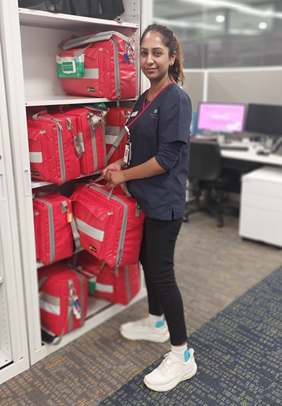
What have been the workforce outcomes?
In five years WH has:
- increased the number of registered and postgraduate specialist nurses and midwives employed by 64% and 60% respectively.
- increased graduate program participants by 200%, and nursing and midwifery staff enrolled in postgraduate studies by 300%.
- decreased nurse and midwife attrition from 7.3% to 6.5%.
- reduced vacancy rates for to less than 4%.
- sustained a reduction in agency nurses and midwives of 0.02%.
What’s next?
WH’s Nursing and Midwifery Workforce Plan provides a framework to identify, develop and implement initiatives that will continue to build the capacity and capability of its nursing and midwifery workforce over the coming years. The Plan and included initiatives will undergo continual assessment and refinement to ensure they meet WH’s needs with outcomes shared via regular reports to executive and operational teams, in addition to appropriate statewide nursing and midwifery forums.
Conclusion
Western Health’s Nursing and Midwifery Workforce Plan has enabled it to develop and implement innovative programs; ensure shared goals and priorities among its nursing and midwifery operational, education and workforce teams; improve employment pathways for nurses and midwives; support existing staff; ensure sustainable growth of its workforce; and provide best care.
Reference
1. Western Health Nursing and Midwifery Workforce Plan 2022-2026. https://westerly.wh.org.au/nursing-midwifery/wp-content/uploads/2023/02/Nursing-Midwifery-Workforce-Plan-2022-26.pdf
Authors:
Ms Lisa Gatzonis MHE, Director of Nursing and Midwifery, Workforce, Western Health.
Adjunct Professor Shane Crowe BN Bed, Executive Director, Nursing and Midwifery, Western Health.
Ms Hannah Sharrock MBA, Professional Practice Development and Improvement Manager, Nursing and Midwifery Workforce Unit, Western Health.
Professor Rochelle Wynne PhD, Chair in Nursing, School of Nursing and Midwifery, Centre for Quality and Patient Safety Research – Western Health Partnership in the Institute for Health Transformation, Deakin University.
Dr Sara Holton PhD, Senior Research Fellow, School of Nursing and Midwifery, Centre for Quality and Patient Safety Research – Western Health Partnership in the Institute for Health Transformation, Deakin University.



